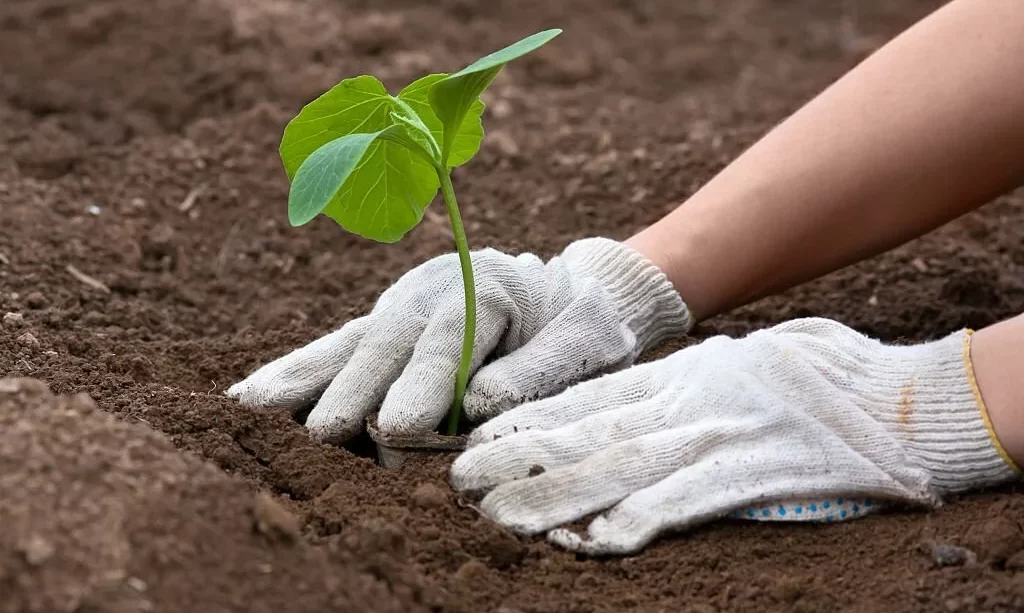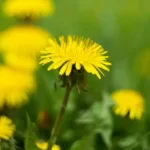Pumpkins, with their vibrant orange hues and iconic presence in fall decorations and delicious recipes, are a beloved symbol of the autumn season in Tennessee. However, what many may not realize is that the key to enjoying a bountiful pumpkin harvest lies in the timing of their planting. In this guide, we’ll delve into the world of pumpkin cultivation in the Volunteer State and underscore the importance of planting pumpkins at the right time. Whether you’re a seasoned gardener or just starting, understanding when to plant pumpkins in Tennessee is essential for a successful and flavorful pumpkin crop.
Tennessee’s Climate
Tennessee’s climate is as diverse as its geography, offering a range of conditions from the Appalachian Mountains in the east to the Mississippi River in the west. Understanding this climatic diversity is crucial in determining the ideal planting time for pumpkins.
Tennessee experiences a mix of temperate and subtropical climates. The eastern part of the state, with its higher elevation, typically sees cooler winters and milder summers. In contrast, the western regions often enjoy milder winters and warmer summers. This climate diversity plays a substantial role in deciding when to plant pumpkins.
To make the right planting decisions in Tennessee, it’s essential to identify your local climate zone within the state. The timing for planting pumpkins can vary, whether you’re in the eastern or western regions, and your local climate zone can impact your growing season’s duration. By gaining insights into Tennessee’s climate variations, you can make informed choices about the best time to plant pumpkins, setting the stage for a rewarding pumpkin harvest.
Pumpkin Varieties for Tennessee
Selecting the right pumpkin variety is a pivotal step in ensuring a successful pumpkin crop in Tennessee. Fortunately, there are pumpkin varieties well-suited to the state’s diverse climate. Here are some options to consider:
- Jack O’Lantern: The classic choice for carving and decorating, Jack O’Lantern pumpkins are well-suited to Tennessee’s conditions. They produce medium-sized, bright orange pumpkins that are perfect for Halloween.
- Sugar Pie: If you’re looking to make delicious pumpkin pies and other culinary delights, Sugar Pie pumpkins are an excellent choice. They have a sweet, fine-textured flesh ideal for cooking.
- Cinderella: Cinderella pumpkins, with their striking reddish-orange color and flattened shape, are both decorative and great for pies. They are well-adapted to Tennessee’s climate.
- Blue Hubbard: For those who enjoy larger pumpkins and want to use them for soups and stews, Blue Hubbard pumpkins are an excellent option. Their bluish skin and sweet, fine-textured flesh make them a valuable addition to the garden.
When choosing your pumpkin variety, consider your local climate, your intended use for the pumpkins, and your personal preferences. The right variety can enhance your pumpkin-growing experience.
- Pie Pumpkin – The Small Sugar Pumpkin’s flesh is sweet and delicious, perfect for using in pumpkin pies and other baked goods.
- Pie Pumpkin – The Small Sugar Pumpkin’s flesh is sweet and delicious, perfect for using in pumpkin pies and other baked goods.
- Prolific – The Small Sugar pumpkin vine is a consistent producer, with High Yields of beautiful 10 inch pumpkins with smooth orange skin.
- Grow Now or Later – Plant now or store for future growing seasons. Will remain viable for years if stored in a cool dry location. Each packet has instructions for saving seeds so you can perpetuate your harvest and share with others.
- Easy to Grow – Seeds are packed in a beautiful paper packet with instructions for successful growing and germination in your own home garden. Getting started is simple for both beginner and experienced gardeners.
Spring Planting
For most parts of Tennessee, spring is the ideal season to plant pumpkins. Typically, this means getting your pumpkin seeds or seedlings in the ground from late April to early May when the soil has warmed up and is workable. Spring planting allows your pumpkins to make the most of the warm months ahead, promoting robust growth and a rewarding harvest.
To begin, prepare your garden bed by loosening the soil and incorporating organic matter for improved drainage and fertility. Plant your pumpkin seeds or seedlings about 1 inch deep and 2-4 feet apart in rows, with approximately 5-6 feet of space between rows. Cover the seeds with soil and provide them with an initial watering to help settle the soil.
As the weather warms, and daylight hours increase, your pumpkin plants will start to grow and develop their iconic leaves. Proper care during the growing season, including regular watering and monitoring for pests and diseases, is essential for a successful pumpkin crop. By planting in the spring and providing consistent care, you’ll be well on your way to enjoying fresh, homegrown Tennessee pumpkins, whether for carving, decorating, or culinary use.
Care and Maintenance
Caring for your pumpkin crop in Tennessee is crucial to ensure a productive and healthy harvest. Here are key care and maintenance tasks to keep in mind:
- Watering: Maintain consistent moisture in the soil, especially during dry periods. Deep watering is essential to encourage robust growth and prevent the soil from drying out.
- Fertilizing: Pumpkins are heavy feeders, so regular fertilization is important. Consider using a balanced, all-purpose fertilizer. Apply it as the vines start to grow and continue through the growing season, following recommended dosage guidelines.
- Pest and Disease Management: Keep a watchful eye for common pumpkin pests, including cucumber beetles and squash bugs. Implement organic pest control methods or consult your local agricultural extension service for guidance. Disease prevention is also crucial; practices like avoiding overhead watering can help reduce the risk of fungal diseases.
- Pruning and Training: Encourage pumpkin vines to grow in the desired direction by gently training them. Pruning excess leaves can also help improve air circulation and reduce the risk of diseases.
Proper care throughout the growing season ensures that your pumpkin plants have the best conditions for a successful harvest.
Harvesting and Storing Pumpkins
The excitement of harvesting your homegrown pumpkins is a defining moment for any gardener. Knowing when and how to harvest is crucial to preserving their quality. When the pumpkin’s skin becomes hard, and the stem starts to dry and turn brown, it’s usually time for harvest.
To harvest, use a sharp knife or shears to cut the pumpkin from the vine, leaving a few inches of stem attached. This stem is essential for preventing rot and extending the pumpkin’s shelf life.
After harvesting, allow your pumpkins to cure in a warm, dry place for about ten days. This process toughens the skin and enhances the pumpkin’s flavor. Once cured, store your pumpkins in a cool, dark, and dry area, such as a basement or cellar. Ideal storage temperatures are around 50-55°F (10-13°C). Properly stored pumpkins can last several months, providing you with fresh, local pumpkins for autumn decorations or culinary delights throughout the season.
With these care and harvesting practices, you can enjoy the fruits of your pumpkin-growing efforts well into the fall. Whether they’re transformed into festive jack-o’-lanterns or transformed into pies, your homegrown Tennessee pumpkins offer a unique and satisfying taste of the season.
Cooking and Enjoying Tennessee Pumpkins
Cooking and enjoying the pumpkins you’ve grown in Tennessee is a truly rewarding experience. These fresh, homegrown gems offer a unique flavor and are incredibly versatile. Here are some delicious ways to savor your Tennessee pumpkins:
- Pumpkin Pie: The classic favorite. Bake a homemade pumpkin pie with your fresh pumpkin puree, cinnamon, and nutmeg for a true taste of autumn.
- Roasted Pumpkin Seeds: Don’t toss those seeds! Clean and roast them with your favorite seasonings for a delightful and healthy snack.
- Pumpkin Soup: Whip up a warm and hearty pumpkin soup, perfect for those cool Tennessee evenings. Add a dash of cream and a sprinkle of herbs for extra flavor.
- Pumpkin Bread: Bake pumpkin bread or muffins that will fill your kitchen with the enticing aroma of spices. Enjoy these treats for breakfast or as a snack.
- Decorative Carvings: Carve your pumpkins into spooky jack-o’-lanterns for Halloween decorations, adding a touch of homegrown charm to your celebrations.
Conclusion
Growing and enjoying Tennessee pumpkins is about more than just gardening; it’s about cultivating a unique connection to your food and the changing seasons. By understanding your local climate, choosing the right pumpkin varieties, and planting at the right time, you set the stage for a successful harvest. With diligent care, proper maintenance, and timely harvesting, you’ll have fresh, local pumpkins that can’t be matched in taste or quality.
Whether you’re an experienced gardener or new to the world of pumpkin cultivation, embrace the journey of growing your own pumpkins in Tennessee. The flavorful dishes and delightful decorations you create from your homegrown pumpkins will not only please your senses but also provide a deep sense of satisfaction and connection to the season. Happy gardening and bon appétit!






